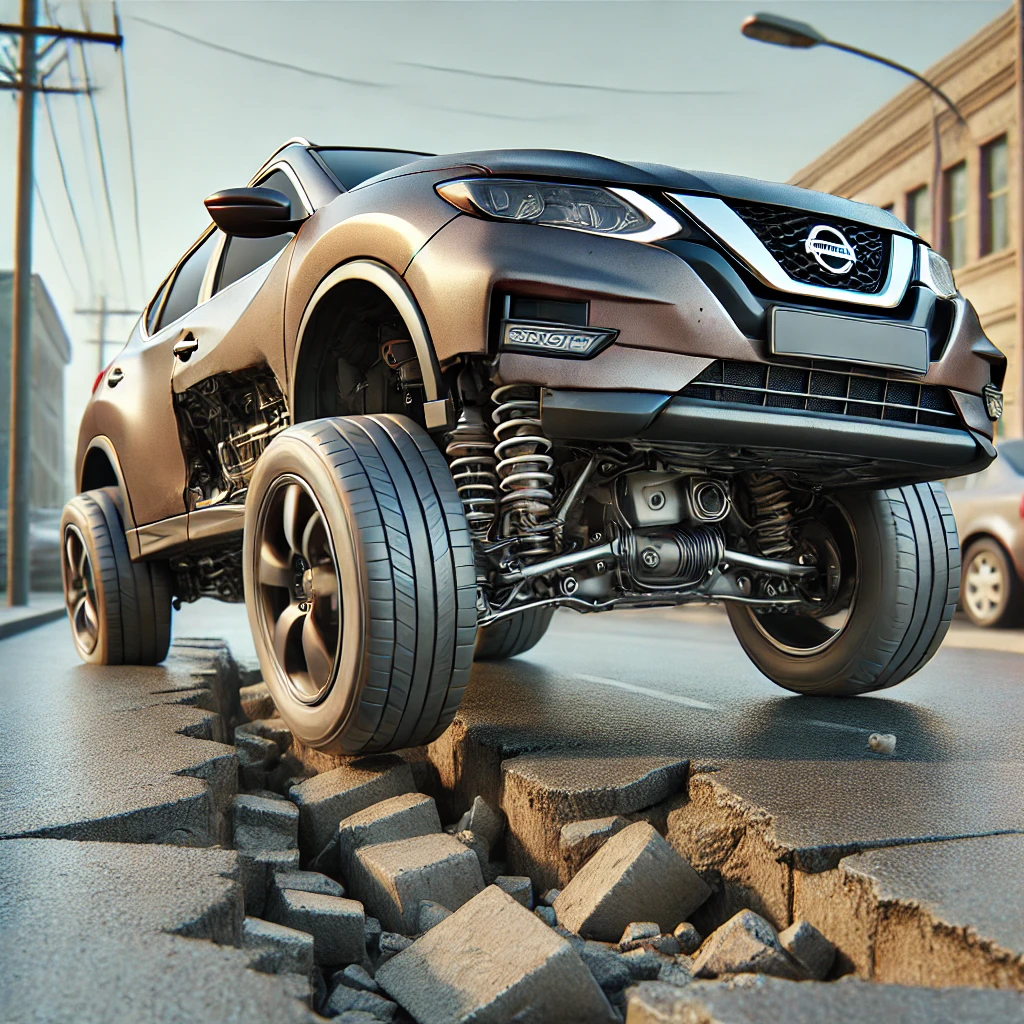If your Nissan’s ride feels rougher than usual, strange noises come from underneath, or your steering doesn’t feel as responsive, your suspension might be failing. Addressing these signs early can prevent costly repairs and safety issues.
TLDR:
If your Nissan exhibits excessive bouncing, unusual noises, uneven tire wear, or steering instability, it’s likely the suspension is failing. Ignoring these signs can lead to costly repairs and unsafe driving conditions.
What We Will Cover
- Common warning signs of a bad suspension
- How different suspension components affect performance
- Causes of suspension failure
- How to diagnose the issue
- Potential repair costs
- Preventative maintenance tips
What Are the Warning Signs of a Bad Nissan Suspension?
A vehicle’s suspension is responsible for ensuring a smooth ride, stability, and proper handling. When it starts failing, you may notice the following symptoms:
- Excessive bouncing – If your car bounces more than usual after hitting a bump, the shocks or struts may be worn out.
- Unusual noises – Clunking, creaking, or knocking sounds when going over bumps indicate possible worn-out components.
- Uneven tire wear – A failing suspension may cause improper alignment, leading to excessive or uneven tire tread wear.
- Pulling to one side – If your car drifts left or right while driving straight, there could be a suspension or alignment issue.
- Dipping when braking – The front end dipping significantly when braking may indicate weak shocks or struts.
- Steering problems – If steering feels loose or requires more effort, the suspension system could be compromised.
Ignoring these signs can cause further damage to your vehicle’s components and create unsafe driving conditions.
How Do Different Suspension Components Affect Performance?
Your Nissan’s suspension system consists of multiple components that work together to provide a stable ride. When one part fails, it affects overall performance.
- Shocks and struts – These absorb impacts from the road. When worn, they reduce ride comfort and make the car unstable.
- Control arms and bushings – These allow wheels to move up and down while staying aligned. Damaged bushings lead to clunking noises and poor alignment.
- Springs – These support the vehicle’s weight. If broken or sagging, the car may sit lower and feel unbalanced.
- Tie rods and ball joints – These connect the steering system to the wheels. Worn-out parts result in loose steering and uneven tire wear.
- Sway bar links – These reduce body roll during turns. When worn, excessive body lean occurs.
What Causes Suspension Failure in Nissan Vehicles?
Several factors can contribute to suspension failure, including:
- Normal wear and tear – Suspension parts wear out over time, especially if driven on rough roads.
- Potholes and road conditions – Hitting deep potholes or speed bumps too fast can damage suspension components.
- Overloading the vehicle – Carrying excessive weight strains the suspension system.
- Lack of maintenance – Ignoring regular inspections and fluid changes can accelerate wear.
- Corrosion – Rust buildup weakens suspension parts, leading to premature failure.
How Can You Diagnose a Bad Suspension?
If you suspect an issue, here’s how you can check for signs of a failing suspension:
- Bounce test – Push down on the front or rear of the car. If it bounces multiple times, the shocks may be worn.
- Visual inspection – Look for leaking shocks, worn-out bushings, or sagging springs.
- Check tire wear – Uneven tire wear suggests suspension misalignment or weak components.
- Drive test – Listen for noises, check for pulling to one side, and assess ride quality.
If you experience any of these signs, have your Nissan inspected by a professional mechanic.
How Much Does It Cost to Fix a Nissan’s Suspension?
The cost of suspension repairs depends on the severity of the damage and the components that need replacement.
| Repair Type | Estimated Cost |
|---|---|
| Shock or strut replacement | $300 – $1,000 per pair |
| Control arm replacement | $400 – $900 per side |
| Tie rod end replacement | $150 – $350 per side |
| Ball joint replacement | $200 – $500 per side |
| Wheel alignment | $75 – $200 |
Labor costs vary depending on the complexity of the repair and the vehicle model.
How Can You Prevent Suspension Problems?
Preventative maintenance helps extend the life of your Nissan’s suspension system.
- Avoid potholes and rough roads – Driving carefully reduces stress on suspension components.
- Check tire pressure regularly – Properly inflated tires improve ride quality and reduce suspension wear.
- Inspect suspension parts – Regularly checking shocks, struts, and bushings can catch issues early.
- Get regular wheel alignments – Misaligned wheels put extra strain on suspension parts.
- Replace worn components promptly – Ignoring minor problems can lead to bigger, costlier repairs.
FAQs
Can I drive with a bad suspension? Driving with a failing suspension is dangerous as it affects handling, braking, and tire wear. It’s best to fix issues immediately.
How long does a Nissan suspension last? With proper maintenance, suspension components can last 50,000 to 100,000 miles. However, driving conditions impact longevity.
What happens if I don’t fix my suspension? Ignoring suspension issues can lead to poor handling, increased tire wear, and potential accidents.
How do I know if my Nissan needs an alignment instead of a suspension repair? If your car pulls to one side without bouncing or noises, an alignment may solve the issue. If there’s excessive bouncing or clunking sounds, the suspension likely needs repairs.
Regular maintenance and early diagnosis of suspension issues help keep your Nissan running safely and smoothly. If you notice any symptoms of suspension failure, addressing them immediately can save money and prevent further damage.

